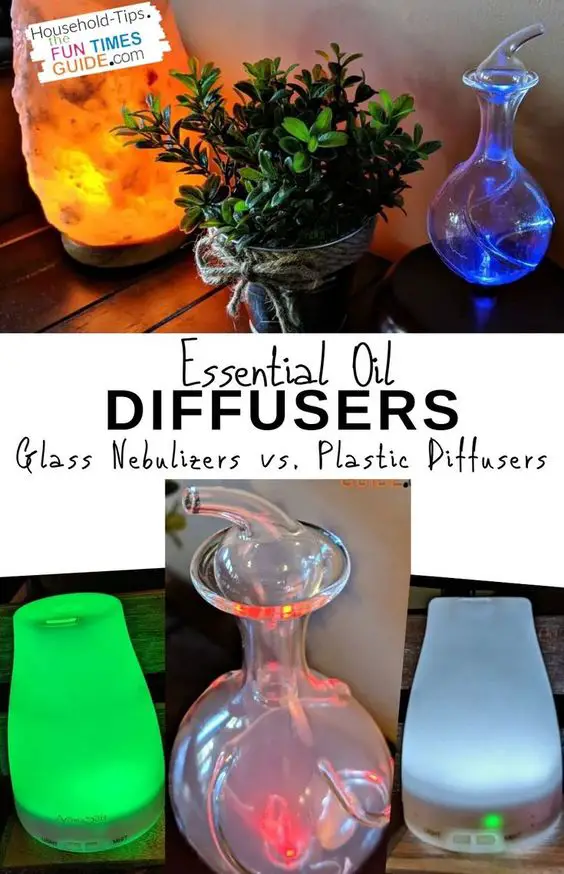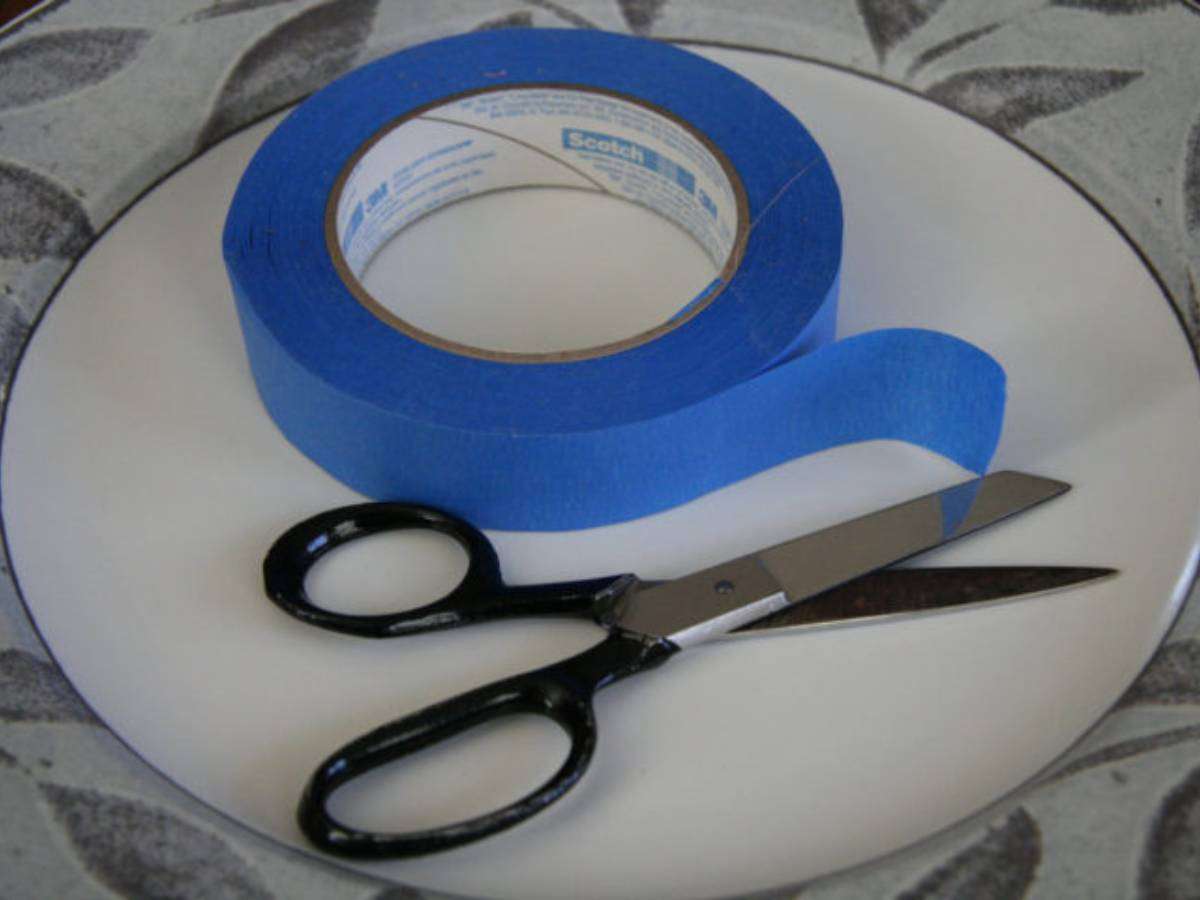I’ve used essential oil diffusers for years! I use them in my home for 2 reasons:
- To eliminate odors inside the house and make our living space smell nice
- To reap the aromatherapy benefits associated with inhaling essential oils
For the most part, my essential oil diffusers up til now have all been 100% plastic (ultrasonic diffusers)… and a few other types of warming scent diffusers. The one I use most is the Aroma Soft essential oil diffuser — it’s a great ultrasonic diffuser, but I’ve learned there’s something even better.
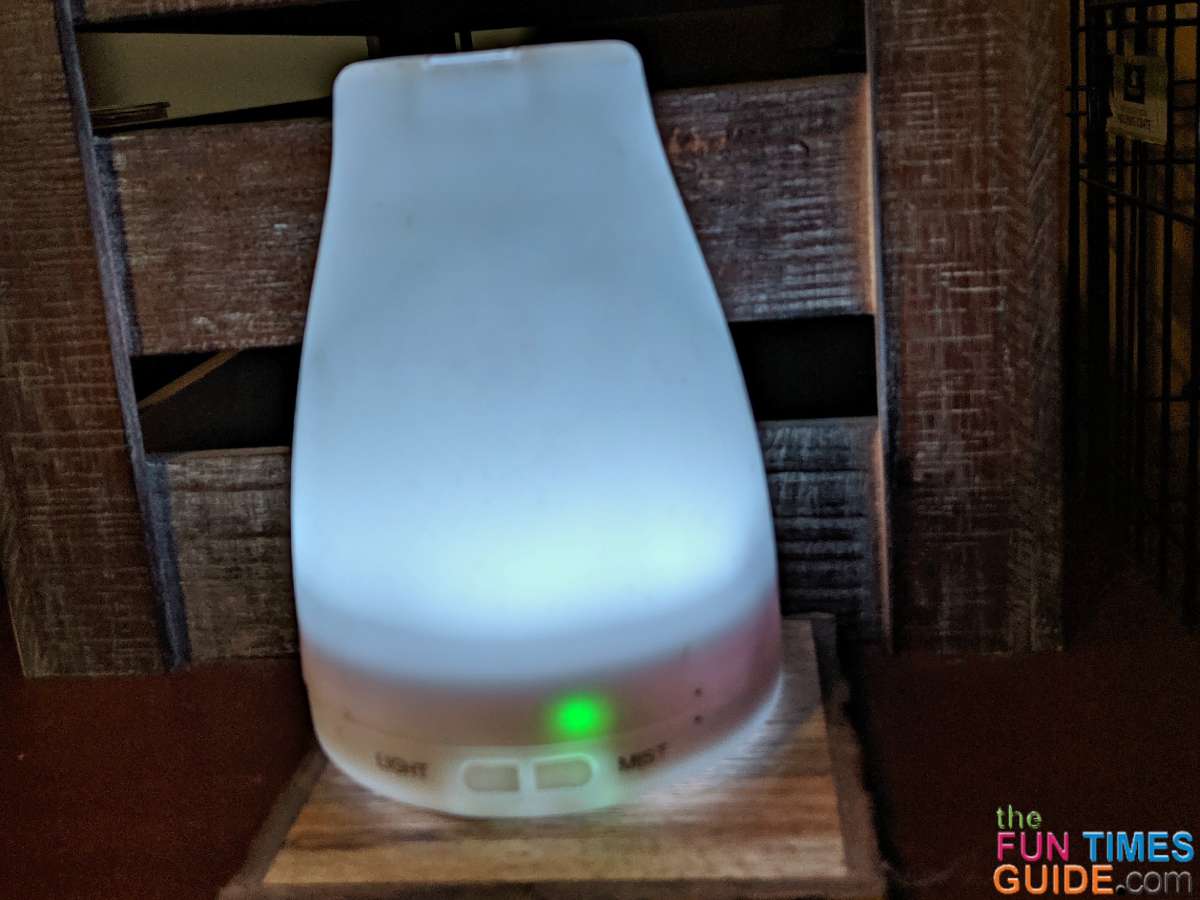
I was recently given a nebulizing diffuser to try for the first time — it’s the Radiance nebulizer from Organic Aromas. This nebulizing diffuser is unlike anything I’ve ever used before… and I diffuse essential oils a lot! (I have 3 dogs and always fear that my house will smell like “dog” if I don’t burn candles, use aromatherapy plug-ins, or diffuse essential oils occasionally.)
Since I recently learned the differences between a regular essential oil diffuser and a nebulizing diffuser firsthand, I figured there are probably others who don’t know about the differences.

Trust me, once you use a nebulizing diffuser (a glass essential oil diffuser), you’ll never want to go back to using plastic aromatherapy diffusers again — because there’s a huge difference!
Nebulizing Diffuser vs. Ultrasonic Diffuser
Following are the biggest differences (apples to apples, and point by point) that I’ve experienced while using essential oil nebulizers vs. ultrasonic essential oil diffusers…
Nebulizer (a.k.a. Nebulizing Diffuser)
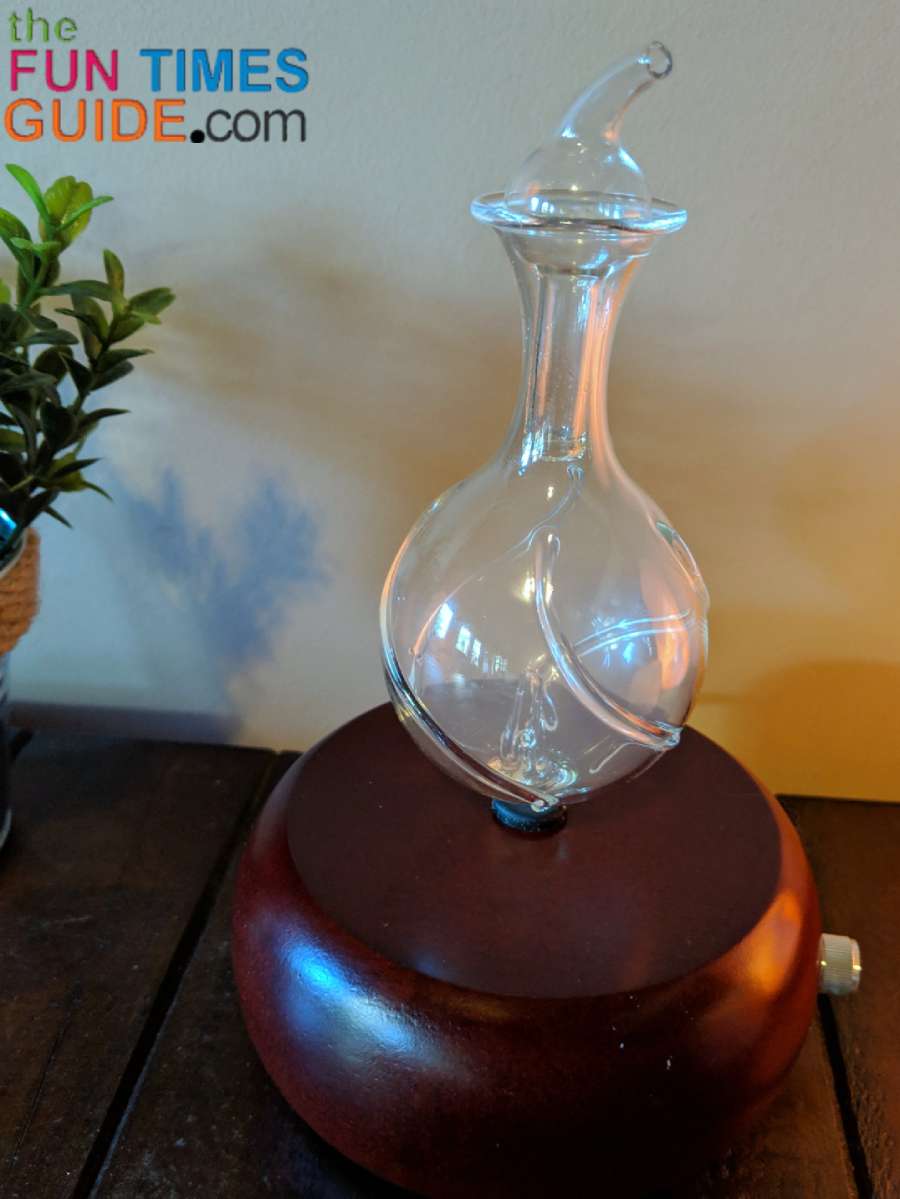
- Uses pressurized air to disperse essential oils — which appear as an ultra-fine mist coming from the multi-directional glass nebulizer cap that rests on top of the glass reservoir.
- When the diffuser is plugged in and turned on, short bursts of air break down the essential oils into microparticles –microscopic droplets that are only 5 microns in diameter.
- Since the essential oil particles are microscopic in size, very small, and very light — so they float up, down, and all around the room.
- As a result, every little drop of essential oil gets distributed into the air — and you get the maximum therapeutic benefits from your essential oils. (You’ll also save a lot of money on buying more oils!)
- A nebulizing diffuser releases only ultra-fine microparticles of essential oil into the air — maintaining the potency and effectiveness of your essential oils. This is the best and healthiest way to diffuse essential oils — because you get to experience the full all-natural scent and therapeutic properties of your essential oils.
- There is a longer-lasting, pleasant scent in the air — in all directions. The micro-particles are so light, they even reach other rooms and other levels of the home. My Radiance nebulizer is rated to keep the air smelling great in a room that is 800 sq ft or less. But I find that the scent naturally permeates the entire house — yes, even upstairs. It’s much more subtle in other rooms, but it does make its way into them!
- A nebulizing essential oil diffuser requires no heat… and no water. Heat alters the chemical structure of essential oils. Water dilutes the potency of essential oils. Both prevent you from receiving the full benefits of aromatherapy.
- A glass essential oil diffuser (a.k.a. nebulizing diffuser) is completely non-toxic. Since there’s no plastic anywhere on it (or in it), it will not off-gas.
- It’s clean and easy to use. There’s no mess — since you don’t have to add water. Just pour a very few drops of 100% pure essential oil into the glass reservoir top… then turn it on. You will immediately see an ultra-fine mist and smell the aromatherapy scent.
- It’s quiet. My Radiance nebulizer is whisper quiet (unlike my plastic diffusers). You could easily sleep in a room with this nebulizing essential oil diffuser. I can’t hear it at all when it’s running.
- A glass essential oil diffuser is a sleek, yet noticeable, addition to your home’s decor. (The Radiance nebulizing diffuser that I have is 7.5 inches tall and 5 inches wide.)
- You’ll use much less essential oil with a nebulizer than you would with a traditional diffuser — and you won’t need to run it for longer than a few minutes. That’s because a nebulizer breaks down the essential oil into very tiny micro-particles and it disperses them into the air very quickly.
- A nebulizing diffuser only needs to run for a very short time to fill the room aromatherapy from your essential oils. For example, my Radiance diffuser runs for 2 minutes at a time, then shuts off for 1 minute, runs for another 2 minutes, then shuts off for 1 minute — and so on. It will auto shut-off after 2 hours, but I’ve never let it run more than 15 minutes at a time because the scent is so strong.
- I absolutely love the mood lighting that a nebulizing diffuser provides! The color-changing lights make a glass essential oil diffuser appear super elegant. With the Radiance nebulizer specifically, the glass reservoir has raised surfaces on the sides for added dimension — and when the lights are on, it looks super sleek! (You can also choose to leave it on one single color, if you wish, or turn the lights off completely.) I like how a glass nebulizer diffuser adds a unique touch to your home decor — and even when it’s not turned on, it looks great!
- The scent that’s emitted from a nebulizing essential oil diffuser is stronger — because it’s not diluted with water (nor is it impacted by heat).
A nebulizing diffuser works like a perfume atomizer. A small air pump blows air across a small tube creating a powerful vacuum that pulls the essential oil from the bottom of the tube to the top in a fine spray. This type of diffusion does not rely on any other elements to diffuse the essential oil, so the mist is entirely composed of the essential oil. Nebulizing diffusers also have air flow controls that allow you to determine the amount of essential oil being released into the air.
~ Source
Diffuser (a.k.a. Ultrasonic Diffuser)
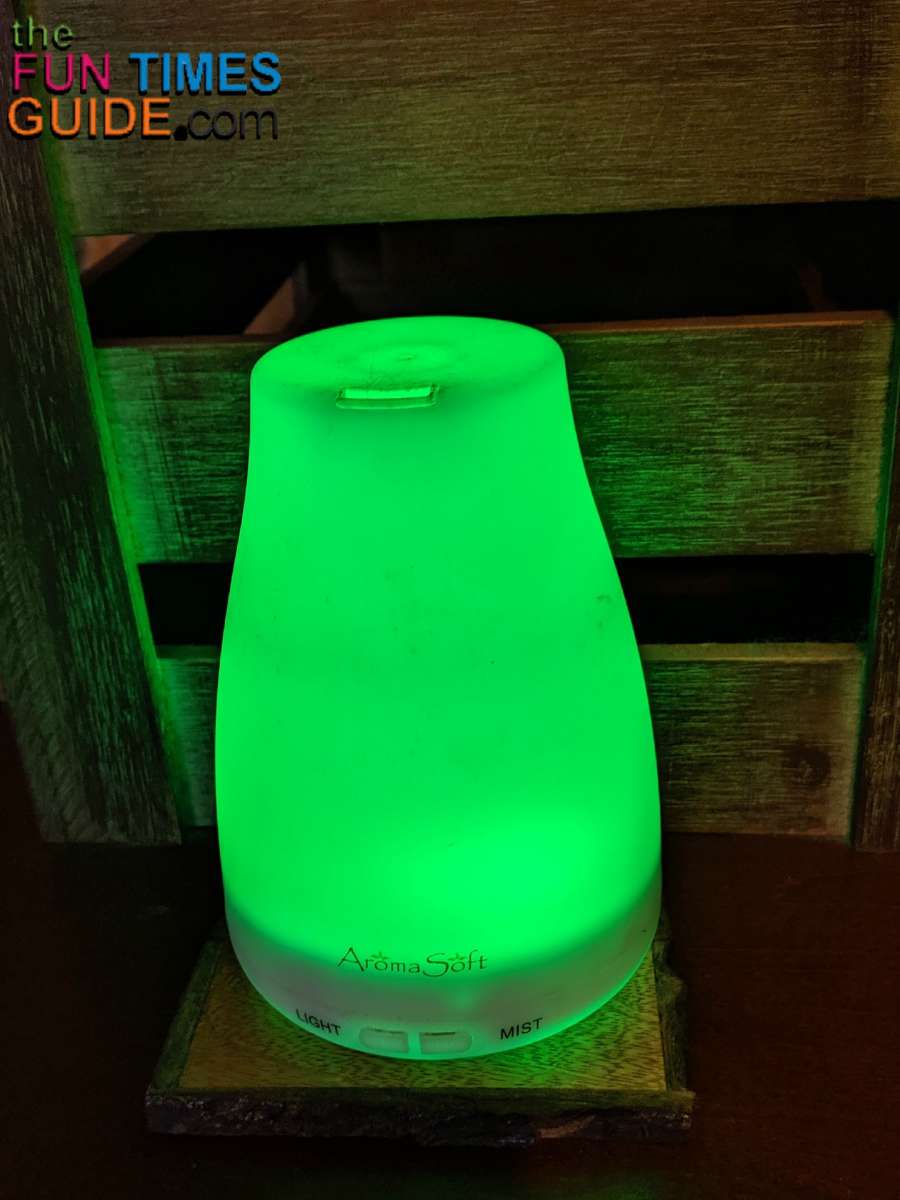
- Uses evaporated water to disperse the essential oils — which appear as a fine mist coming from a hole in the top of the plastic ultrasonic diffuser.
- When the diffuser is plugged in and turned on, ultrasonic vibrations break down the essential oils into smaller particles.
- Due to being mixed with water, the essential oil particles are larger, heavier, and more dense — so they tend to fall downward onto the floor and furniture nearby.
- As a result, you won’t be inhaling much of the essential oils — so you only get minimal therapeutic benefits from the essential oils and you will ultimately spend more money having to buy more oils.
- An ultrasonic diffuser releases a lot of moisture into the air (similar to a humidifier) — which dilutes the potency and effectiveness of your essential oils in terms of aromatherapy benefits… and fills your home with added humidity.
- There is a short-lived, pleasant scent in the air — mostly from the height of the diffuser on a shelf or table downward.
- It requires water. Since you have to dilute your essential oils with water, you’re not getting the full effects that pure essential oils provide — making an ultrasonic diffuser less effective for aromatherapy purposes.
- A plastic essential oil diffuser (a.k.a. ultrasonic diffuser) is primarily made of plastic — which can directly affect the purity of the essential oils. Not to mention the fact that the water inside an ultrasonic diffuser tank can grow mold and fungus.
- It can be a little messy and takes a few minutes to set-up each time — because you have to go to a nearby sink to add water to the tank, and then mix well after adding the essential oils.
- It’s not as quiet as a nebulizing diffuser. It’s not overpowering, but I can definitely hear my ultrasonic diffuser whenever it’s running.
- Plastic ultrasonic diffusers are typically a little bit smaller than glass nebulizer diffusers (my Aroma Soft ultrasonic diffuser is 5.5 inches tall and 4 inches wide) — but they’re not nearly as attractive. In fact, you almost want to hide them inside your home, because it’s so obvious that they’re made of plastic!
- A plastic ultrasonic diffuser disperses much larger essential oil particles (which are heavy) — so they just fall downward onto your floor and furniture, instead of being distributed completely into the air. That’s ultimately why you’ll use more essential oil and have to run it longer to fill the room with enough scent.
- An ultrasonic diffuser typically runs for 8 to 12 hours at a time. Since the essential oils are highly diluted, it takes much longer for the room to fill with the aroma of your essential oils. (I usually run 2 ultrasonic diffusers at the same time in the same room together — just to be able to get enough scent in that room.)
- An ultrasonic diffuser looks almost like a “toy” when the color-changing lights are turned on — because the colored LED bulbs are shining through the diffuser’s white plastic cover. (You can also choose to leave it on one single color, if you wish, or turn the lights of completely.)
- The scent that’s emitted from an ultrasonic essential oil diffuser is weaker because the essential oils are diluted with water.
With an an ultrasonic diffuser, the essential oil particles down into their base molecules. These molecules are negatively charged — so they disperse by attaching the positively charged molecules in your home. Ultrasonic diffusers use water as a transference mechanism, but do not rely on steam. Instead, the oil sits on top of the water. Ultrasonic vibrations are created to agitate the water — causing the separation of the oil molecules and releasing the negative particles into the air with a fine mist.
~ Source
Good To Know Before You Buy A Nebulizing Diffuser
My guesstimate is that the aroma from a nebulizing diffuser is at least 10 times more powerful than the scent from an ultrasonic diffuser!
An essential oil nebulizer emits a very strong, 100% pure aroma across a wide area in a very short period of time — even though you can easily adjust the strength of the mist.
My Radiance diffuser has an adjustable “volume” knob — so you can adjust how much scent you want to fill the room. I usually keep the misting volume down pretty low. Trust me, there’s plenty of aromatherapy happening even on the low setting!
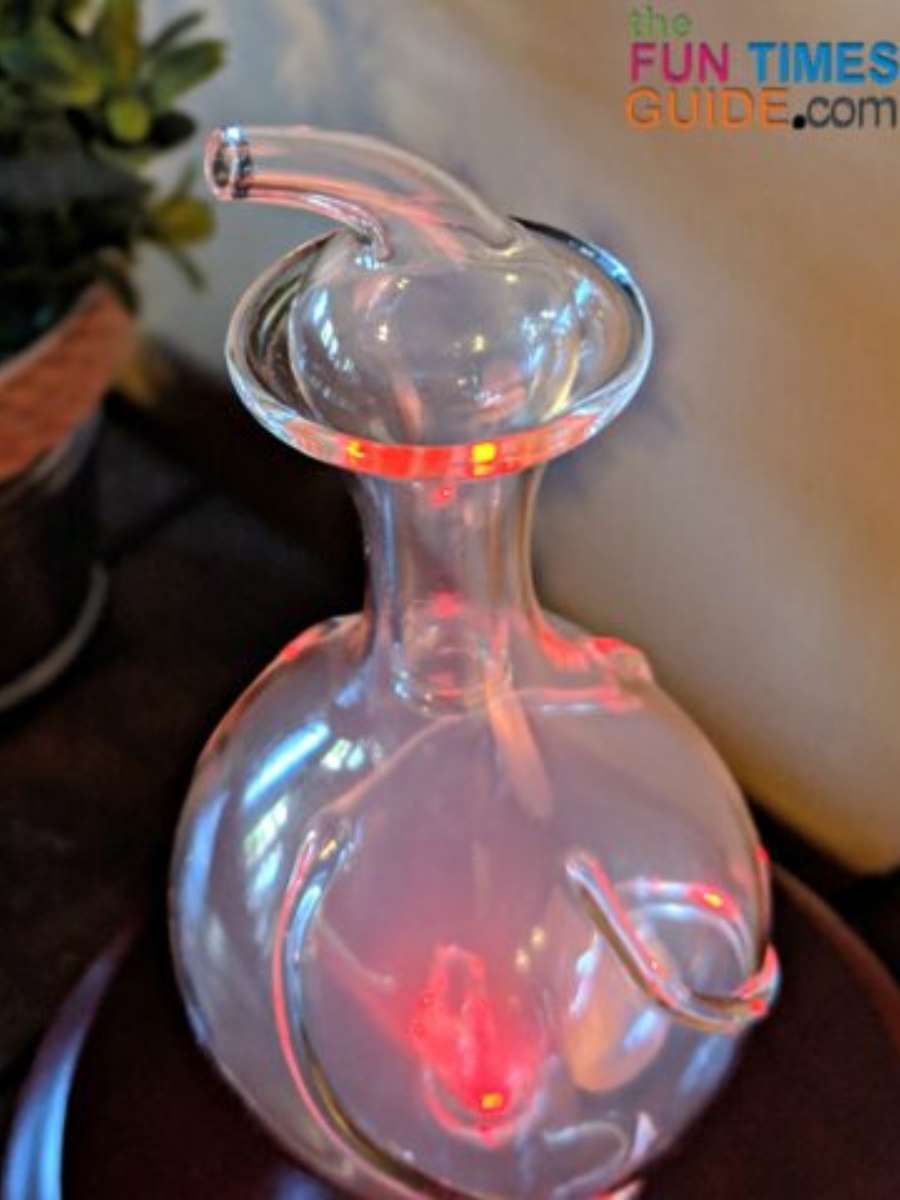
So keep this in mind…
Breathing too much of any 100% pure essential oil could actually give you a headache.
The reason I bring this up is because most people, like myself, tend to start out with an oil & water diffuser (an ultrasonic diffuser) — where you add several drops of essential oil (typically 20 to 30 drops… or more) to a large amount of water (usually around 1/4th cup).
As a result, we grow used to our traditional ultrasonic diffusers diluting the essential oils with water… and running for hours at a time without any ill effects. (Yes, it’s usually necessary to run an ultrasonic essential oil diffuser for several hours in order to achieve a strong enough scent to fill the room.)
So the first time you use a nebulizing essential oil diffuser, I strongly recommend using it for only a few minutes max. Trust me, you will notice the scent… in the entire room!
Just don’t over-do it. The aroma of 100% pure essential oils from a glass nebulizer diffuser is much, much stronger than the strength of the aroma you’re used to from a plastic ultrasonic diffuser.
Also keep in mind…
The strong scent of 100% pure essential oil that a nebulizing diffuser provides might be too much for infants and for pets (especially puppies and cats).
So if you plan to use an aromatherapy nebulizer around your children or pets (I use a diffuser safely around my dogs), be sure to research which essential oils are the safest to use around them.
Here are a few good links to get you started:
- A list of essential oils that are safe to diffuse around children
- A list of essential oils that are safe to diffuse around dogs
- A list of essential oils that are safe to diffuse around cats
TIP: Don’t enclose your dogs (or children) in a room where they can’t get away from the strong scent that’s being emitted from a nebulizing essential oil diffuser!
3 Reasons You Might Want To Use A Plastic Ultrasonic Diffuser
Nothing’s perfect. I tried hard to come up with some reasons that it might make sense to settle for an ultrasonic essential oil diffuser. Here are 4…
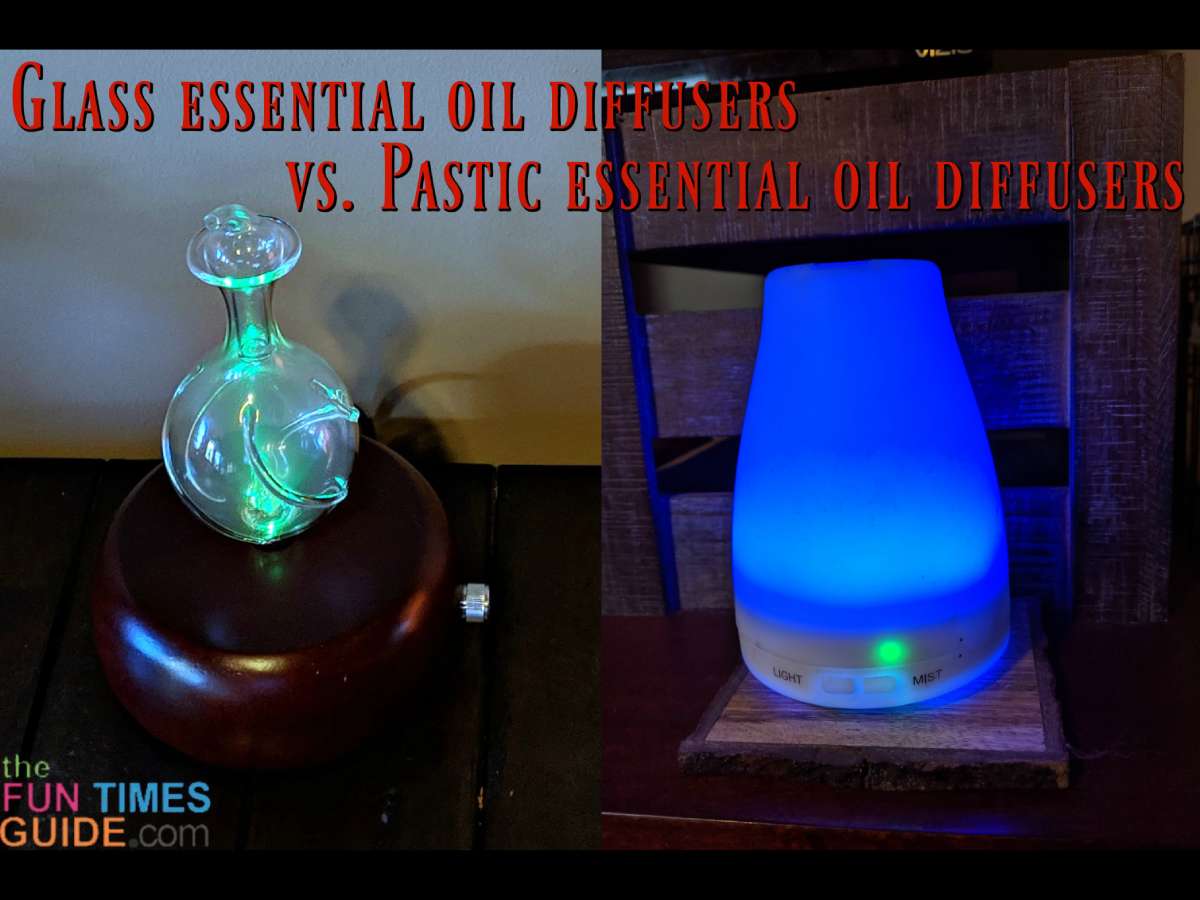
- Essential oil nebulizers are more expensive — roughly $90 versus $20 for an ultrasonic diffuser. But… you get what you pay for. If you really want a professional, high-quality home accessory that will last for years (as long as you take care of it), then a glass nebulizing diffuser is definitely the way to go.
- A nebulizing essential oil diffuser is fragile. So if you have kids or pets, don’t leave it on a table where they can reach it. The solid wood base on the Radiance nebulizer has a rubberized surface on the very bottom — so it stays firmly in place on your shelf, countertop, or tabletop.
- Since a nebulizing diffuser is primarily made of lightweight glass, it is breakable. Fortunately, the delicately hand-blown glass top that comes with the Radiance nebulizer rests securely on a hand-crafted, solid hardwood base. And since you’re not removing the top itself to add the oils (you simply hold the essential oil bottle over the top and let the drops go directly inside), you shouldn’t have any reason to bump or damage the glass reservoir.
- While a plastic ultrasonic essential oil diffuser only needs to be cleaned monthly, a glass nebulizer needs to be cleaned on a regular basis — like weekly! This is important to keep the delicate glass tubes which diffuse the essential oils from getting clogged. I try to clean mine after every couple of uses and before long trips when I’ll be gone for several days. Fortunately, it’s really easy to clean a glass nebulizer — just swish some rubbing alcohol inside the reservoir, let the diffuser run for 5 to 10 minutes, and then dump out the remaining alcohol!
My Thoughts About Nebulizers From Organic Aromas
I’ve only used their Radiance nebulizing diffuser and some of their 100% pure steam-distilled essential oils (the Favorites Sampler Pack) — but I can personally attest to the fact that Customer Service at Organic Aromas is excellent.
Their top notch customer service, combined with the quality of their products, makes them a stand-out company in the essential oils and aromatherapy industry. (Their many reviews from happy customers prove it.)
Every question that I personally asked them about the Radiance nebulizer was answered right away — and they didn’t shy away from fielding any additional questions I might have.
It was obvious that they wanted to make sure I was happy, safe, and knew how to use a nebulizer properly.
Here’s the online manual for Organic Aromas nebulizers. (pdf here)
One of the biggest questions I had about the Radiance diffuser was…
What does this nebulizer do if you turn it on, but there isn’t any oil inside? Does it continue to run? Will it safely run just the lights and not “burn out” the element that works with the oil? On a related note, is it safe to run the nebulizer when you know that there is no oil inside?
I was told that the nebulizer will function properly whether it has essential oil inside it or not. It has no sensor to test the level of the oil. They gave it a 2-hour automatic shut down to protect the pump inside. So, it can run for up to 2 hours with no oil inside — and, if desired, you can even run this nebulizer with just the light and no essential oil at all!
Also, the element that works with the essential oils will never “burn out” — because there is no heat or flame inside. It simply uses pressurized air to atomize the oils. It’s all about those 2 tubes in the bottom — one is for air, the other sucks up the oil that you put in the glass reservoir. The pressurized air running over the top of the “oil tube” creates suction. When the oil is sucked up the tube and comes into contact with the pressurized air, it is atomized into a zillion particles!
Also, they told me that the light on the Radiance diffuser is a 2-watt LED bulb, and it will function for 25,000 hours or more.
The Bottom Line
I don’t know what took me so long to discover nebulizers (probably the price). But I do know that I won’t be using my ultrasonic essential oil diffusers nearly as much anymore — they just don’t compare, and they take way too long to fill the room with enough scent.
Nebulizing diffusers are my jam now! Specifically, I absolutely love the Radiance nebulizer. It… is… incredibly… beautiful! And it looks great in my living room. (I now keep my plastic ultrasonic diffusers in the bedroom where the dogs spend the most time — because they look kind of cheap and, well, plasticy.)
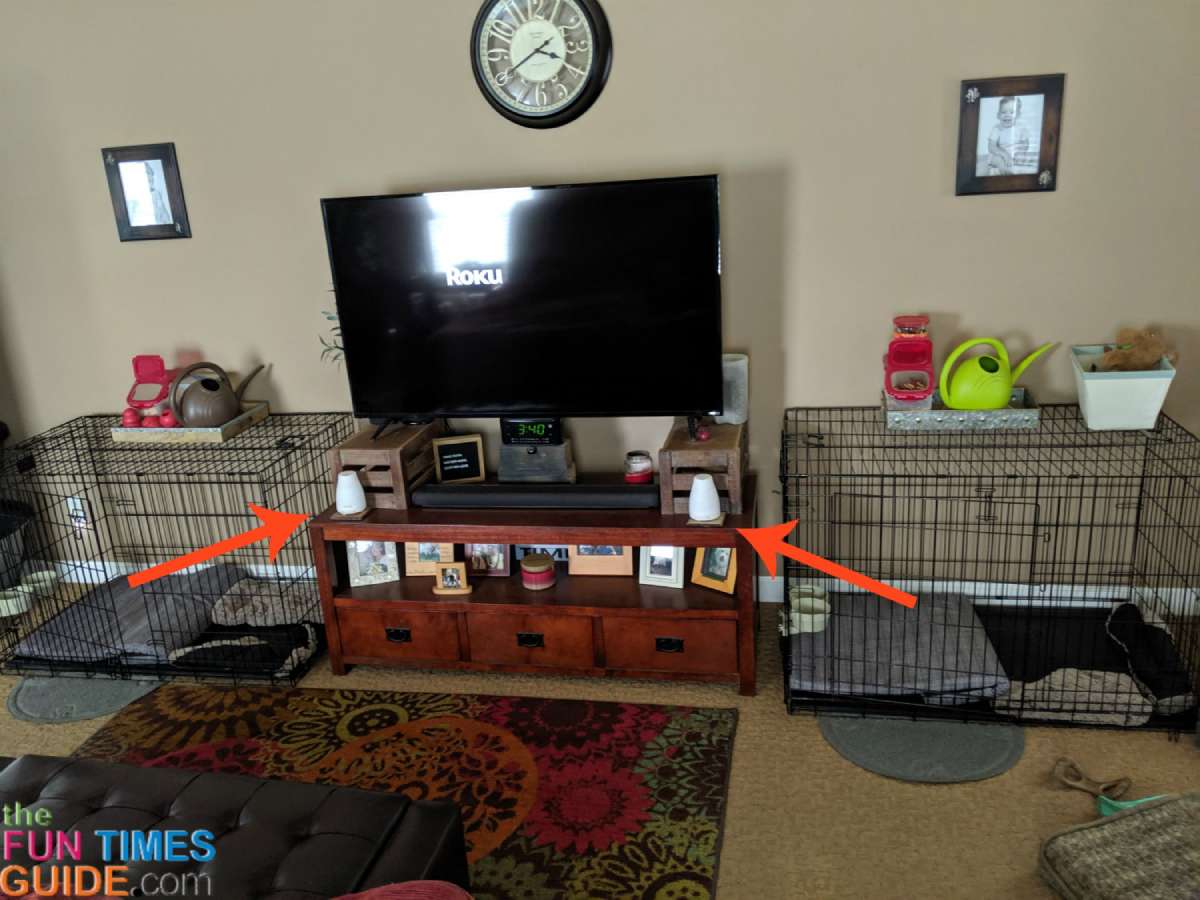
A nebulizing glass essential oil diffuser definitely provides professional-grade aromatherapy… and it looks professional too. It’s the type of diffuser that you often see in offices (like chiropractors, massage therapists, doctors, etc). It’s clearly a device that is truly for “professional aromatherapy”.
The best part: an essential oil nebulizer emits a strong aroma across a wide area in a very short amount of time. This is great for quickly adding a long-lasting, all-natural, chemical-free scent to the room before guests arrive! And super handy when you have dogs in the house — because we all know how everyday dog odors can linger for days. (In addition to using an essential oil diffuser, these are the best ways to remove dog odor… without a bath.)
A nebulizer is much more powerful than an ultrasonic diffuser. It quickly cuts through the odors in your home — including cooking odors and pet odors. In my case, it’s both:
- I cook fish a lot. Plus, on the rare occasions that I deep-fry anything, the smell of grease seems to linger for days. An essential oil nebulizer knocks them out in minutes!
- I have 3 dogs (not my plan… 2 of them “found us”). No matter how clean you keep your house, “dog smell” is just a given. They play hard… they sweat… they track dirt, mud, and pollen in from the outside… they sometimes pee or poop or vomit on the floor or carpet… you get the idea! When you have an essential oil nebulizer, all of those smells go away in a few short minutes – yes, really.
I plan to add at least 1 more glass nebulizer to my house — so I’ll have one in each of the 2 rooms we spend the most time in. I like it that much.
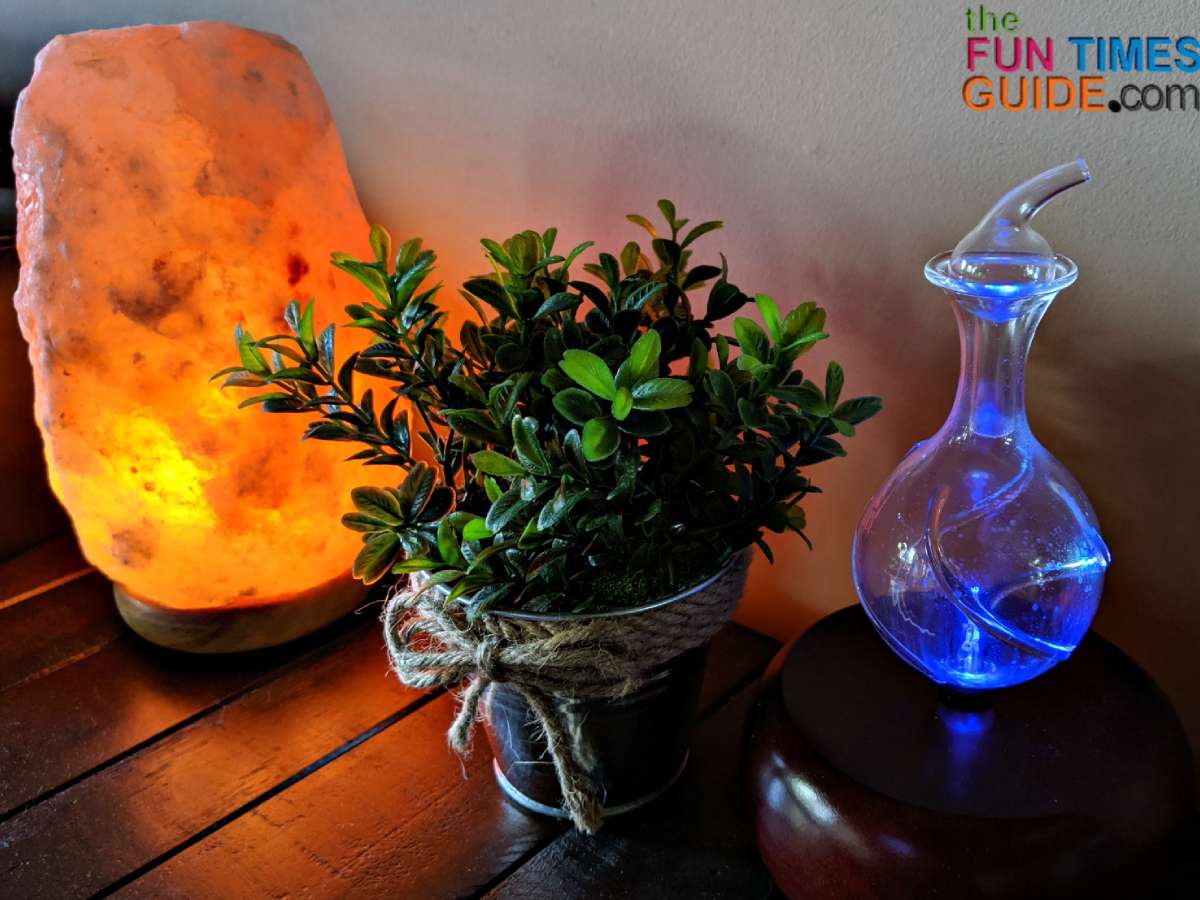
And I’m adding aromatherapy nebulizers to my ongoing lists of wedding gift ideas and housewarming gift ideas, too. (For the right person, a nebulizing diffuser would make a nice Birthday or Christmas gift as well.)
For what it’s worth, my Radiance nebulizer and the essential oil set each arrived from Organic Aromas in very nice packaging — professional, super classy looking, and well-protected from bumps during shipping. I dare say the packaging alone makes a great first impression (if you decide to give one as a gift). Then, immediately after plugging it in… all of the beauty (and benefits) of nebulizing diffusers quickly become obvious!
Wondering how an essential oil nebulizer works? It works by using what is known as the Bernoulli principle.
Here’s a video showing how easy it is to use the Radiance nebulizer:
Like this post? Save it to read again later… or share with others on Pinterest!
